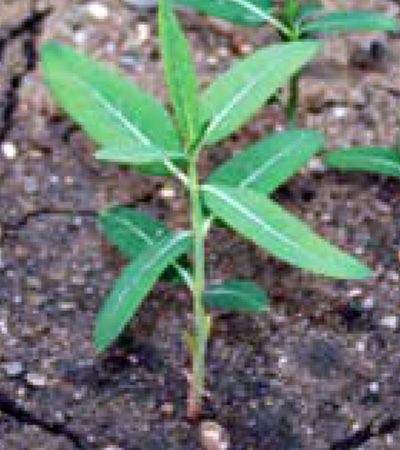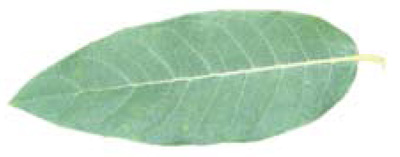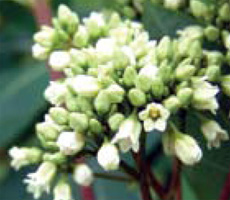Hemp dogbane
June 11, 2015
Apocynum cannabinum L. Apocynaceae (Dogbane family)
Life cycle
Erect, patch-forming perennial.

Young hemp dogbane plant.
Leaves
Opposite, narrow oval to egg-shaped, 2 to 5 inches long with smooth margins. The upper leaf surface is usually pale to bluish green and smooth; the lower leaf surface may be sparsely hairy. Leaves are smaller than those of common milkweed and exude a milky sap when damaged.

Hemp dogbane leaf.
Stems
Erect, up to 6-foot-tall, slender, hairless, reddish stems are herbaceous and multi-branched at the top and semi-woody at the base. Stems exude a milky sap when damaged.
Flowers and fruit
Small, white to greenish white, bell-shaped flowers are found in flat- to round-topped clusters. Fruit are 4- to 8-inch-long, narrow, reddish brown, sickle-shaped capsules that usually occur in pairs. Pods split open at maturity to release small, spindle-shaped seeds, each with a tuft of long, silky hairs that aid in wind dissemination.


Hemp dogbane flower clusters (left) and fruit (right).
Reproduction
Seeds, creeping roots and rhizomes.
Similar weeds
Spreading dogbane (A. androsaemifolium L.)
Differs by having a preference for a drier habitat, usually shorter height, often drooping leaves and more distinct, usually pinkish white flowers.
Print a PDF of this page: Hemp dogbane



 Print
Print Email
Email



